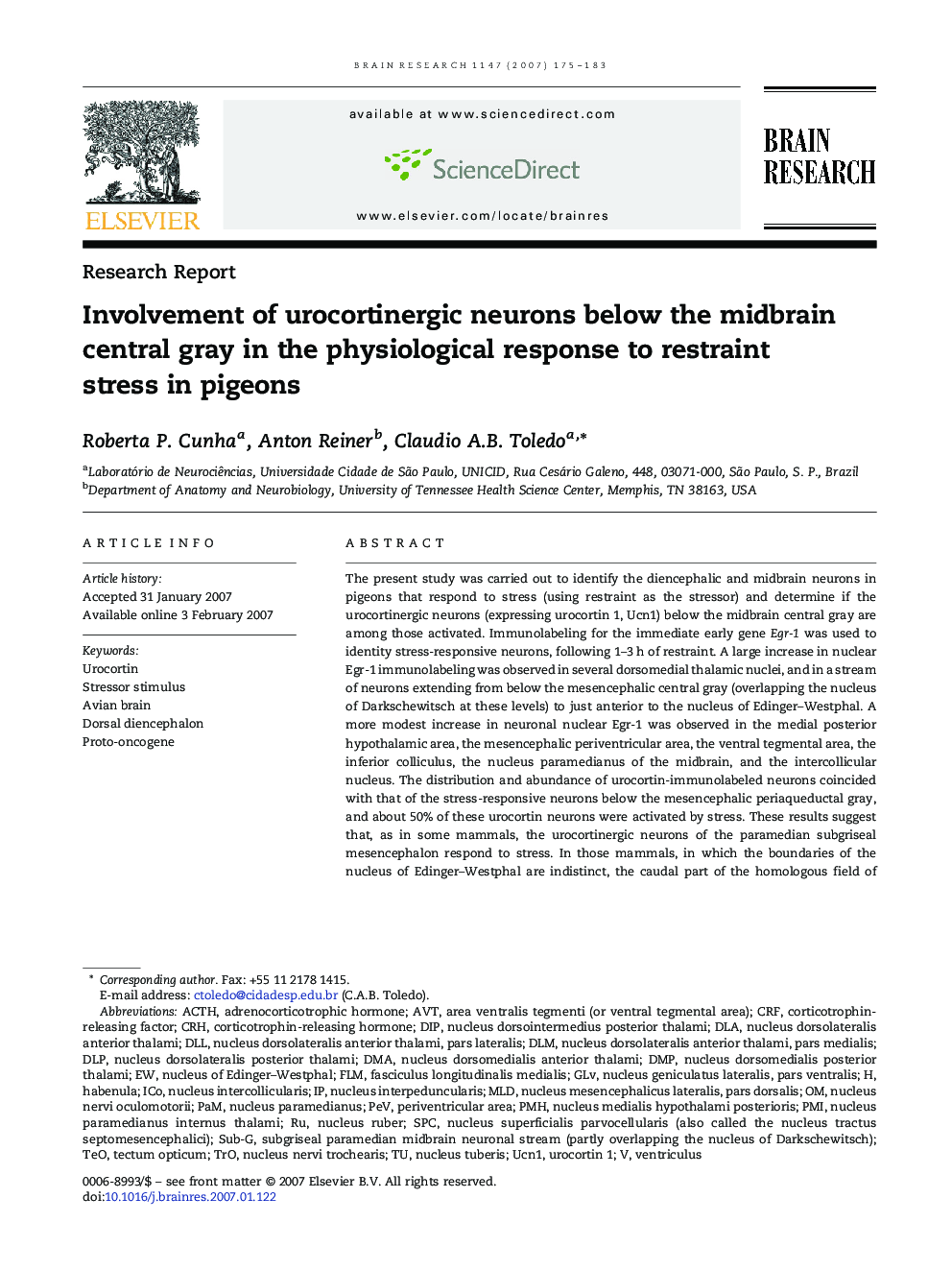| کد مقاله | کد نشریه | سال انتشار | مقاله انگلیسی | نسخه تمام متن |
|---|---|---|---|---|
| 4331183 | 1614292 | 2007 | 9 صفحه PDF | دانلود رایگان |

The present study was carried out to identify the diencephalic and midbrain neurons in pigeons that respond to stress (using restraint as the stressor) and determine if the urocortinergic neurons (expressing urocortin 1, Ucn1) below the midbrain central gray are among those activated. Immunolabeling for the immediate early gene Egr-1 was used to identity stress-responsive neurons, following 1–3 h of restraint. A large increase in nuclear Egr-1 immunolabeling was observed in several dorsomedial thalamic nuclei, and in a stream of neurons extending from below the mesencephalic central gray (overlapping the nucleus of Darkschewitsch at these levels) to just anterior to the nucleus of Edinger–Westphal. A more modest increase in neuronal nuclear Egr-1 was observed in the medial posterior hypothalamic area, the mesencephalic periventricular area, the ventral tegmental area, the inferior colliculus, the nucleus paramedianus of the midbrain, and the intercollicular nucleus. The distribution and abundance of urocortin-immunolabeled neurons coincided with that of the stress-responsive neurons below the mesencephalic periaqueductal gray, and about 50% of these urocortin neurons were activated by stress. These results suggest that, as in some mammals, the urocortinergic neurons of the paramedian subgriseal mesencephalon respond to stress. In those mammals, in which the boundaries of the nucleus of Edinger–Westphal are indistinct, the caudal part of the homologous field of urocortinergic neurons has been referred to as the nucleus of Edinger–Westphal. In pigeons, in which the nucleus of Edinger–Westphal is cytoarchitectonically well-defined, the caudal part of this urocortinergic field clearly does not include the nucleus of Edinger–Westphal.
Journal: Brain Research - Volume 1147, 25 May 2007, Pages 175–183